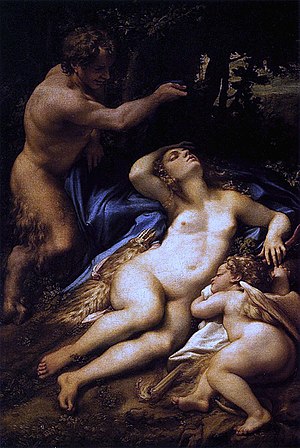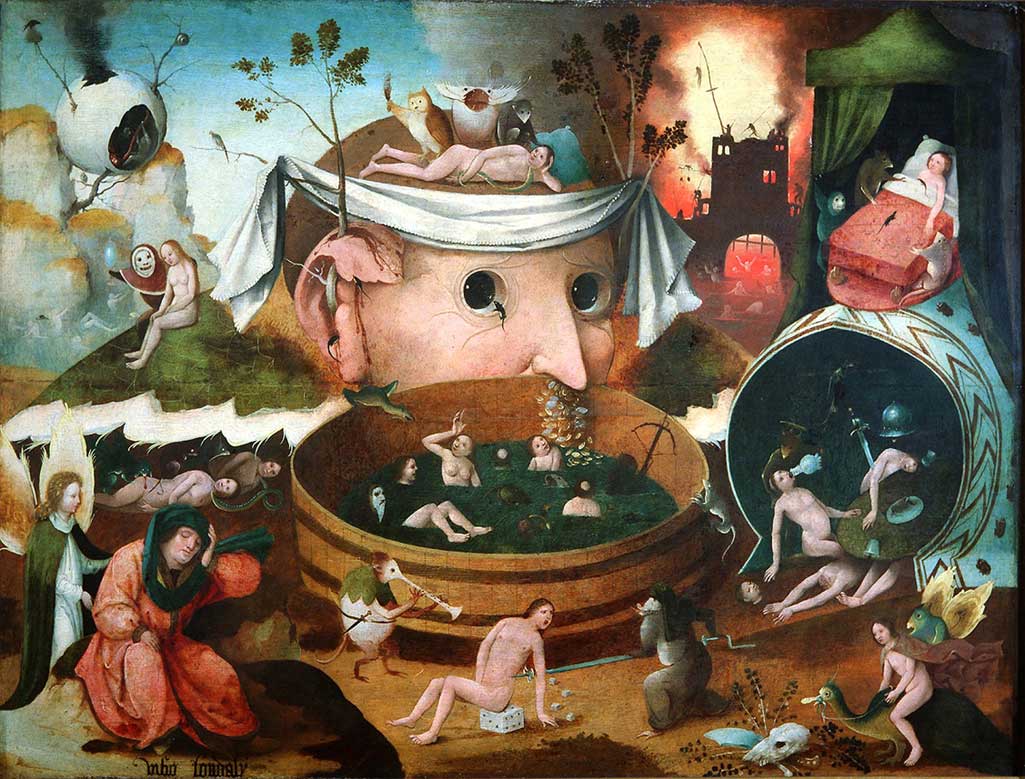Bringing together around eighty works by celebrated Renaissance artists, from Hieronymus Bosch to Veronese, and including Dürer and Correggio, this exhibition at the Musée du Luxembourg from October 9, 2013 to January 26, 2014 gives us an insight into the golden age of the representation of dreams. It takes us, from the moment of sleep to the moment of wakening, through dreams and nightmarish visions, and invites us to give free rein to our imagination, to lose ourselves in the disturbing images of dreams.
The exhibition is organised by the Réunion des musées nationaux – Grand Palais and the Soprintendenza del Polo Museale Fiorentino.
Dreams during the Renaissance have an extraordinary importance. For thinkers and scientists men by dreaming escape from their bodies and can enter into a relationship with the divine or malefic powers of the hereafter.
This idea fascinates then the artists of the Renaissance, but how to depict which cannot be shown? According to the subject, the periods and the countries, they brought to this question very different answers, which the exhibition " The Renaissance and dream " confronts.
Bringing together around eighty works by celebrated Renaissance artists, from Hieronymus Bosch to Veronese, and including Dürer and Correggio, the exhibition gives us an insight into the golden age of the representation of dreams. It takes us, from the moment of sleep to the moment of wakening, through dreams and nightmarish visions, and invites us to give free rein to our imagination, to lose ourselves in the disturbing images of dreams.
From a wonderful review:
An excellent review of the show in its earlier incarnation at the Pitti Palace in Florence
One marvel of the exhibition is
Raphael’s The Vision of a Knight (c. 1504),
which depicts a young knight’s dream in which he is forced to chose between two fair maidens, one representing virtue and the other pleasure. It is a moral allegory, hinging on the dangers of lust and temptation.
The Vision of Tondal Attributed to the School of Hieronymus Bosch
Dreaming as a chance to reflect on sin is a recurring theme. The potency of conscience seems to follow the soul on its journey to a higher realm. This can be seen in The Vision of Tondal, attributed to the School of Hieronymus Bosch. Tondal, the protagonist of Marcus of Cashel’s illuminated manuscript, dreams that he experiences the punishments of sinners and the rewards of the good, as presented in the Bible. The painting asserts that punishment and reward are always in measure with the actions performed, an allusion itself to Dante’s idea of the Contrapasso.
The exhibition concludes logically with ‘dawn and the awakening’. If sleep is close to death then awakening is close to resurrection. A highlight here is
Battista Dossi’s The Morning: Aurora with Horses of Apollo,
which represents the excitement and perhaps relief of the new day.
From another excellent review:
Most extraordinary of all is Lorenzo Lotto’s “Sleeping Apollo” from the Museum of Fine Arts in Budapest, from around 1530. In this scenario, the god has been overcome with sleep in a Parnassian grove and, taking advantage of his slumbers, the Muses have ripped off all their clothes — left scattered on the ground at Apollo’s feet along with their scrolls, books, musical instruments and an armillary sphere — and taken to the neighboring meadow, where they can be seen dancing and cavorting, stark naked, with girlish glee.
The angel over Apollo’s head could conceivably indicate that this singular scene is in some way related to Marsilio Ficino’s notion of “vacatio animae,” the theory that during sleep the soul temporarily vacates the body and becomes free of earthly bonds, but here given a uniquely playful spin.
Another landscape by Lotto,
“The Dream of the Young Girl,”
from Washington, opens the next section of the exhibition. This exquisitely painted pastoral vision features a recumbent young girl being showered by a hovering cupid with a stream of flowers, which pour down on her like a shining white waterfall from above, while a female satyr hides behind a tree, watching with amusement the lolling figure of an inebriated satyr at the girl’s feet. The cupid and satyrs seem invisible to the girl and may be part of her dream, but as with the artist’s “Sleeping Apollo” the picture defies any definitive interpretation.
Still another interesting review:

Along with works from local and Italian museums are a remarkable number of excellent loans: the Dosso Dossi Allegory with Pan from the Getty Museum and the Raphael Vision of a Knight from London’s National Gallery particularly stand out.

One could almost miss the undisputed star of the exhibit, Lorenzo Lotto’s small panel of the Allegory of Chastity, from the National Gallery of Art in Washington (ca. 1506). To see this enigmatic painting in person is truly a dream, for no reproduction contains sufficient detail and number of colours to render its delicacy. A woman sleeps against a laurel tree trunk in a landscape and, above, a putto showers her with tiny white flowers. Representing Chastity, she is contrasted by a satyr couple on either side in the foreground—a satyress spying on a drunken and aroused satyr who attempts to get the last drops out of a jug. Look at the treatment of light in this painting, which could be either dusk or dawn. I vote for morning, because Lotto creates the most calming, soft light that seems to just come up from the horizon, starting to brighten the leaves on the trees in the right of the painting, which seem almost afire. Meanwhile, the detail of the tiny white flowers, each petal a daub with a little paintbrush, was added last of all, and is so incredibly delicate.
Images from the exhibition:

The Night (1553–55), Michele di Ridolfo del Ghirlandaio
Paris Bordone, Vénus endormie et Cupidon, Venise, collection G. Franchetti

Venus and Cupid with a Satyr (c. 1528) by Antonio Allegri da Correggio.

Philipp II's Dream by El Greco
More images here




